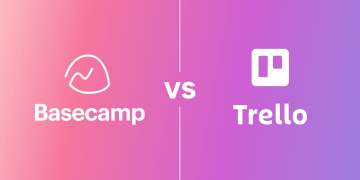Basecamp has long been recognized as a popular project management and collaboration platform, known for its simplicity and effectiveness in helping teams organize and track their work. While many users view it primarily as a task management tool, Basecamp’s features and functionalities extend well beyond basic to-do lists and deadline tracking. In fact, Basecamp has evolved into a comprehensive project management ecosystem designed to improve communication, enhance productivity, and streamline collaboration for teams of all sizes.
In this article, we will explore the question: Is Basecamp more than just a task management tool? We will delve into its various features, examine how it supports different aspects of project management, and consider how it can be a powerful solution for businesses looking to foster efficient workflows, clear communication, and seamless collaboration. We will also look at the ways in which Basecamp can be used creatively, offering insights into how different industries and teams can leverage its capabilities beyond traditional task management.
1. A Simple Interface for Complex Projects
At first glance, Basecamp might seem deceptively simple. Its user interface is clean, with an easy-to-navigate dashboard and minimal clutter. But simplicity does not mean lack of depth. The real power of Basecamp lies in its ability to handle complex projects without overwhelming the user.
Unlike some project management tools that drown you in an endless array of options and features, Basecamp’s minimalist design allows users to focus on what really matters: collaboration, communication, and execution. The tool is designed to reduce the cognitive load on users, ensuring that the interface does not get in the way of productivity. For teams that need straightforward solutions for managing projects, Basecamp offers a refreshing break from the complexity of many other tools.
However, this simplicity does not mean that Basecamp lacks functionality. It includes a wide range of features that support not only task management, but also project planning, team collaboration, and document sharing, among others. This combination of simplicity and depth makes Basecamp a powerful tool for managing any kind of project.
2. Beyond Task Management: Communication and Collaboration
While task management is certainly a central feature of Basecamp, the platform offers much more. One of its standout features is the ability to facilitate communication and collaboration in a way that is integrated into the project workflow.
Real-Time Messaging
Basecamp’s messaging system allows teams to communicate in real time, keeping everyone in the loop and minimizing the risk of misunderstandings or miscommunications. The platform provides dedicated spaces for team discussions, allowing members to chat in organized threads or send private messages. This ensures that important conversations are kept within the context of specific projects or tasks, making it easier to refer back to them later.
Automatic Check-Ins
Basecamp’s automatic check-in feature allows team members to report their progress on tasks in a structured format, without the need for constant meetings or status updates. This feature is especially useful for remote teams who may not have the luxury of regular face-to-face communication. By checking in regularly, team members provide updates on their work, share insights, and raise questions, all of which help keep the project moving forward.

Group Messaging and To-Do Lists
Basecamp also offers group messaging, where you can communicate with your team as a whole, share ideas, and ask questions. This feature integrates smoothly with Basecamp’s to-do lists, making it easier to tie communication directly to specific tasks. For example, a group message about a specific task or milestone can be linked directly to that task, ensuring the context remains intact as the conversation unfolds.
By combining communication and task management into a single platform, Basecamp helps prevent the scattered information and fragmented workflows that can occur when using multiple tools. Everything you need—whether it’s a task, a conversation, or a file—is in one place, making collaboration seamless.
3. Document Storage and File Sharing
Managing files is a critical component of project management, and Basecamp excels in this area as well. The platform includes integrated document storage, allowing teams to upload and share files easily. Documents, images, and other files can be attached directly to specific tasks, projects, or discussions, ensuring that everyone has access to the materials they need without hunting through email threads or multiple cloud storage accounts.
Basecamp also features a handy file versioning system, which helps teams keep track of changes to documents over time. This is especially useful when collaborating on drafts or when working with constantly evolving files. By having access to previous versions of documents, teams can review changes, restore old versions if necessary, and track progress over time.
This document management capability sets Basecamp apart from many other task management tools, which may require third-party integrations for file storage or limit the scope of document sharing.
4. Scheduling and Calendar Integration
Basecamp isn’t just about task management; it also provides tools for scheduling and timeline management. The platform includes an integrated calendar that allows teams to keep track of important dates, deadlines, and milestones. By linking calendar events to specific tasks or projects, Basecamp ensures that your schedule aligns with your work, helping to avoid missed deadlines and bottlenecks.
Moreover, Basecamp integrates with other calendar tools like Google Calendar, making it easy for teams to sync their schedules across platforms. This level of integration ensures that everyone is on the same page when it comes to project timelines, without requiring them to switch between different apps or platforms.
5. A Focus on Remote Teams and Distributed Workforces
In today’s increasingly globalized and remote work environment, tools that foster collaboration across distances have become indispensable. Basecamp is designed with remote teams in mind, offering a set of features that promote communication and coordination even when team members are spread across time zones and geographic locations.
Asynchronous Communication
Basecamp supports asynchronous communication, which is ideal for teams that work across different time zones. Instead of having to coordinate schedules for live meetings, team members can communicate at their convenience, leaving comments, messages, and updates that others can respond to when they’re online. This allows for a continuous flow of work without the constraints of live interactions.
Project Transparency
Basecamp’s structure also fosters project transparency, which is crucial for remote teams. With clear visibility into tasks, deadlines, and team communications, everyone knows what needs to be done and who is responsible for it. This transparency reduces the risk of tasks falling through the cracks or being duplicated, making it easier for remote teams to stay aligned and maintain accountability.
6. Task Management and Priority Setting
Task management is at the core of Basecamp, and its tools allow for simple, but effective, organization of work. The platform offers to-do lists, checklists, and task assignments, all of which can be customized to suit the needs of your team.
To-Do Lists
Basecamp’s to-do lists allow teams to break down large projects into manageable tasks and assign them to specific individuals. Tasks can be marked as complete when finished, providing a sense of progress and accomplishment as projects move forward. You can also add due dates, attach files, and leave comments, ensuring that all relevant information is connected to the task itself.
Prioritization
One of the standout features of Basecamp is its ability to help teams prioritize tasks effectively. Whether you’re managing a long-term project or working on a short-term deadline, Basecamp helps users visualize their workload, prioritize tasks, and focus on what matters most. This clarity is invaluable when managing complex projects with multiple dependencies and timelines.
7. Flexibility Across Industries
Basecamp is versatile and adaptable to a wide range of industries, from marketing agencies and software development teams to education and non-profit organizations. Its straightforward approach to task management and collaboration makes it especially useful for small to medium-sized businesses that don’t need the complexity of enterprise-level solutions.

Marketing Teams
For marketing teams, Basecamp can be a game-changer. Whether managing a marketing campaign, coordinating a product launch, or tracking content production, Basecamp’s to-do lists, calendar integration, and file-sharing features offer an easy way to stay organized. Creative teams can also use Basecamp to collaborate on ideas, share assets, and track the approval process for different stages of a campaign.
Software Development Teams
Software development teams benefit from Basecamp’s project transparency and ease of use. Features like message boards and to-do lists are perfect for tracking development milestones, communicating with clients, and managing bug reports. The simplicity of Basecamp also helps developers avoid getting bogged down in overly complex project management systems that don’t align with their workflow.
Educational Institutions
Educational institutions can also find value in Basecamp’s organizational tools. Teachers can use it to manage class projects, collaborate with colleagues, or organize resources. Students can benefit from the platform’s simplicity, while administrators can use it to manage tasks, deadlines, and communications across departments.
8. The Basecamp Community and Support
Basecamp isn’t just a tool—it’s also a community. The company behind Basecamp, known for its commitment to simplicity and usability, offers a wealth of resources for users. From detailed support documentation to helpful blog posts and a dedicated help center, Basecamp provides excellent support to ensure teams can get the most out of the platform.
Additionally, the Basecamp community is active and engaged, offering a space for users to share tips, ask questions, and discuss best practices. This sense of community is an often-overlooked benefit of using the platform, as it helps users feel connected to a larger network of like-minded professionals.
9. Basecamp for Creativity and Innovation
Basecamp’s flexibility also makes it a great tool for fostering creativity and innovation within teams. For example, product design teams can use Basecamp to organize brainstorming sessions, track iterations, and manage client feedback. Likewise, teams working on new product development can keep track of milestones, test results, and feature ideas, all within a single collaborative space.
Because Basecamp is intuitive and easy to use, teams can focus on the creative process without being bogged down by the technicalities of managing a project. Its built-in communication tools also help spark collaboration, leading to more innovative ideas and efficient workflows.
Conclusion: More Than Just a Task Manager
Basecamp is not merely a task management tool—it is a comprehensive platform for project collaboration, communication, and productivity. Whether you’re managing a remote team, coordinating complex projects, or fostering creativity and innovation, Basecamp offers a simple yet powerful solution to help teams stay organized and efficient. Its combination of task management, communication tools, file sharing, and scheduling features make it a versatile tool that goes beyond traditional project management systems.
By emphasizing transparency, simplicity, and seamless integration, Basecamp is a great fit for teams of all sizes, from startups to large organizations. It offers the structure and flexibility necessary to manage complex workflows without overwhelming users with unnecessary features. As teams and businesses continue to embrace remote and hybrid work models, Basecamp’s ability to support collaboration across distances will only become more valuable.























